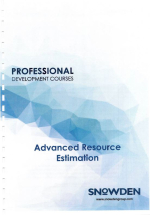Soils are aggregates of mineral particles; and together with air and/or water in the void spaces, they form three-phase systems. A large portion of the earth’s surface is covered by soils, and they are widely used as construction and foundation materials. Soil mechanics is the branch of engineering that deals with the engineering properties of soils and their behavior under stress.
This book is divided into 11 chapters: “Soil Aggregate, Plasticity, and Classification,” “Stresses and Strains: Elastic Equilibrium,” “Stresses and Displacement in a Soil Mass: Two-Dimensional Problems,” “Stresses and Displacement in a Soil Mass: Three-Dimensional Problems,” “Pore Water Pressure due to Undrained Loading,” “Permeability,” “Seepage,” “Consolidation,” “Shear Strength of Soil,” “Elastic Settlement of Shallow Foundations,” and “Consolidation Settlement of Shallow Foundations.” This chapter is a brief overview of some soil properties and their classification.
It is assumed that the reader has been previously exposed to a basic soil mechanics course.













